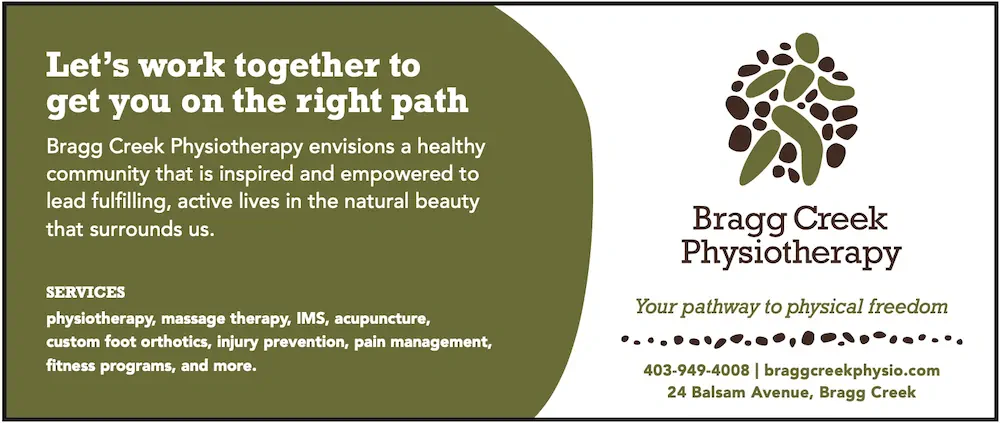BREATHE IN … BREATHE OUT
This month’s article is all about our nervous system and how we can start to impact it with breathwork. Before we start, I want to do a quick introduction since I have recently joined the lovely team at Bragg Creek Physiotherapy. My name is Bre! I hold a Master of Science in Physical Therapy (MScPT) from the University of Alberta and a Bachelor of Science in Kinesiology (BScKin) from the University of Calgary. I take a holistic and personalized approach to physiotherapy, combining individualized therapeutic exercise, hands-on manual therapy techniques, and comprehensive patient education. I aim to create a warm and supportive space where you feel empowered to engage in movement and believe in supporting an active approach to physiotherapy care. I am looking forward to helping you get back to, or continue, the activities that are meaningful in your life!
Now, let’s get into it! The nervous system is the command centre of your body. It includes your brain, spinal cord, and nerves. There is constant communication from your brain to your body through this system. The body sends signals to the brain and the brain sends signals back to the body through these pathways. The nervous system transmits signals that allow us to move, breathe, feel sensations, and respond to the world around us (to give a quick snapshot). The nervous system also plays a large role in perception and the sensation of pain. Sometimes when we have been in pain for a long time the pathways that connect to the brain that send signals (that are interpreted as pain by the brain) get overactive or increase in number. This can contribute to pain becoming persistent and can lead to an over sensitive nervous system (more on this in the June article, so stay tuned).
Now, did you know you can use your breath as a direct line of communication with your nervous system?
Oftentimes we notice our breathing changing as a response to our activity or emotions – controlled involuntarily by our nervous system. But, by controlling our breathing, we can use this same connection to influence our nervous system, voluntarily!
When we can tune into our nervous system, we can communicate to our brain and body that we do not need to be in overdrive. Focusing on breath is an excellent way to tap into and start to regulate your nervous system. When we feel more regulated, we can feel more in control of what is happening in our body, including feeling more in control of our pain. Research is showing that deep breathing is associated with significantly lower pain scores compared to those who don’t deep breathe (Amira et al., 2022). Balban et al. (2023) examined the effect of different breath work techniques and found significant improvements in mood and anxiety, as well as reduced physiological arousal (respiratory rate, heart rate, and heart rate variability) in those who completed breath work.
Now, are you ready to try? Take a minute to notice how you feel before and after.
The Physiological Sigh: Inhale fully through your nose. At the top of the breath take another sip of air. Exhale slowly through pursed lips, clearing all air from your lungs. Try a couple of these breaths. Stop if you feel unwell.
The Box Breath: Inhale through your nose for a count of 4, hold for a count of 4, exhale for a count of 4, hold for a count of 4. Repeat for a couple of cycles. Stop if you are feeling unwell.
Please note that this article does not replace individualized advice from health care providers. If you would like more specific guidance with the symptoms you’ve been experiencing, our team at Bragg Creek Physiotherapy is here to support you! We are looking forward to connecting with you.
Bre Maughan
(MScPT, BScKin)
Bragg Creek Physiotherapy
www.braggcreekphysio.com



























